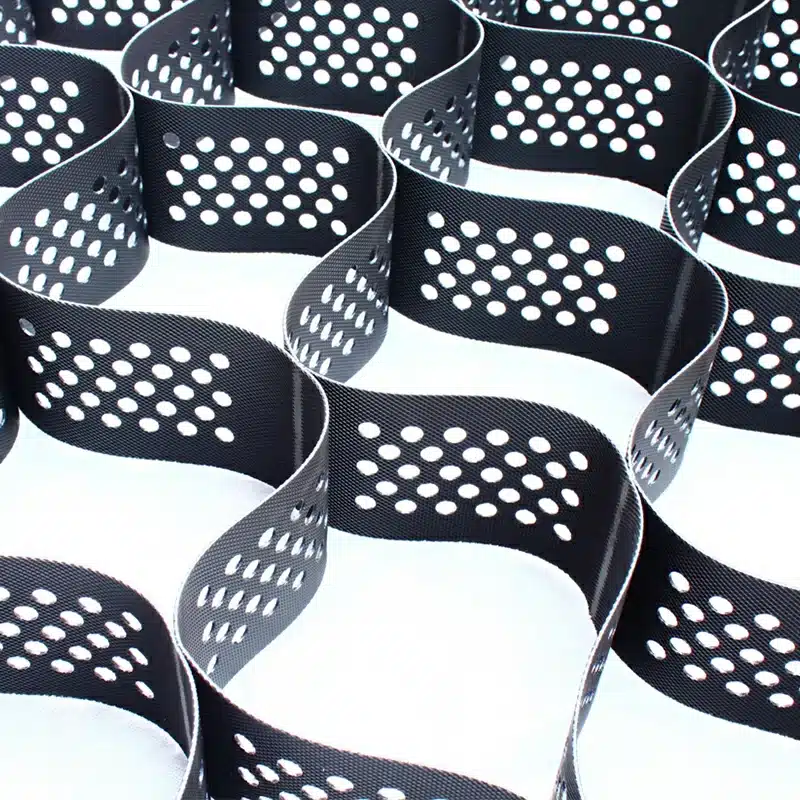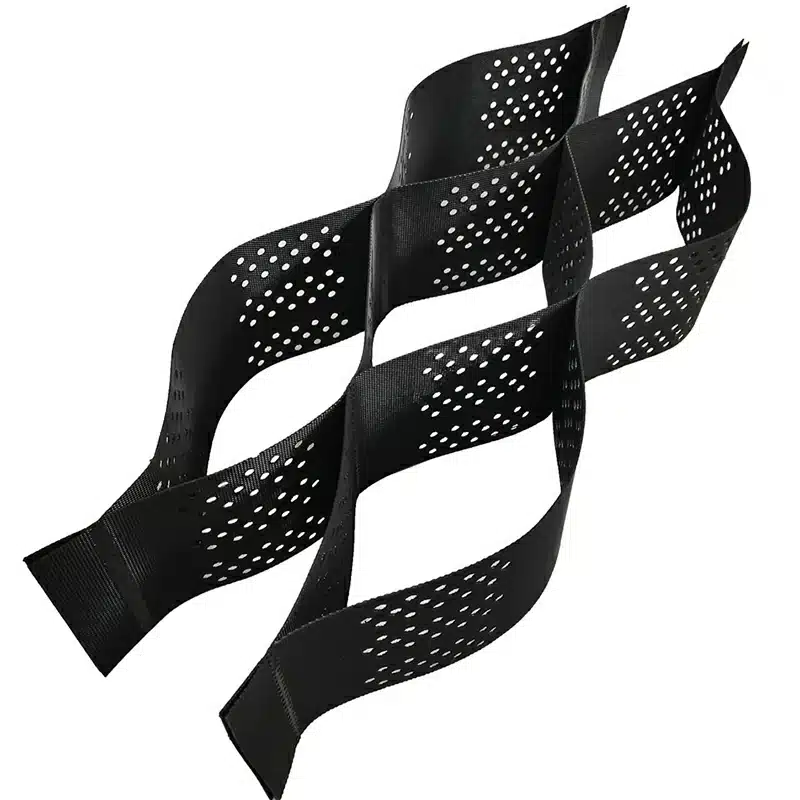+86-159 9860 6917
info@geofantex.com
geofantex@gmail.com
+86-400-8266163-44899
Geocell, a versatile geosynthetic material, has become popular in construction and civil engineering projects. This article explores geocell, a three-dimensional cellular structure that can be filled with soil, gravel, or other materials to stabilize steep slopes and prevent erosion. We’ll also discuss its applications in slope protection and how it differs from geotextiles and geogrids.

What is the geocell technique?
The geocell technique, a soil reinforcement technique, is an innovative approach widely applied in civil engineering and construction projects. It employs a three-dimensional honeycomb-like structure made of high-density polyethylene (HDPE) or similar polymers. Filling the geocell with soil, aggregate, or other construction materials, establishes a stable foundation or retaining wall. This method significantly boosts load-bearing capacity and erosion control, offering cost-effective and eco-friendly solutions.
What is geocell in slope protection?
Geocell is crucial for slope protection, as it prevents soil erosion, and landslides, and helps maintain the structural integrity of embankments and slopes. Placing geocells on slopes con?nes and reinforces topsoil and vegetation, preventing displacement during heavy rainfall or seismic activity. This application leads to substantial reductions in maintenance costs and extends the life of slope protection structures.

What is the difference between geotextile and geocell?
Geotextiles and geocells are both geosynthetic materials, but they serve different purposes. Geotextiles are flat, fabric-like materials employed for filtration, drainage, and separation in construction projects. On the other hand, geocell is a three-dimensional system, whereas Geogrid and geotextile a two-dimensional (complanate) systems primarily used for reinforcement, load distribution, and confinement. While geotextiles are utilized for erosion control and filtration, geocells are designed for soil or aggregate stabilization and reinforcement.
What is the difference between Geocell and Geogrid?
Geocells and geogrids are both employed for soil stabilization and reinforcement, yet their structures vary. The geocell is a deep, three-dimensional mesh structure, while the geogrid is typically two-dimensional. Geocells consist of interconnected cells that can be filled with materials, creating a more stable surface. In contrast, geogrids are flat, grid-like structures positioned within the soil to enhance its tensile strength. Geocells excel in load support and erosion control, while geogrids prove more effective in retaining wall and slope reinforcement.
In conclusion, the geocell technique is a valuable addition to civil engineering projects, offering solutions in slope protection, load-bearing capacity, and soil stabilization. Understanding the distinctions between geocell and other geosynthetic materials such as geotextiles and geogrids is essential for selecting the right solution for your project’s unique needs. By incorporating geocell into your project, you can enhance its durability, cost-efficiency, and environmental sustainability.



Get Free Sample
We’ll respond as soon as possible(within 12 hours)






















